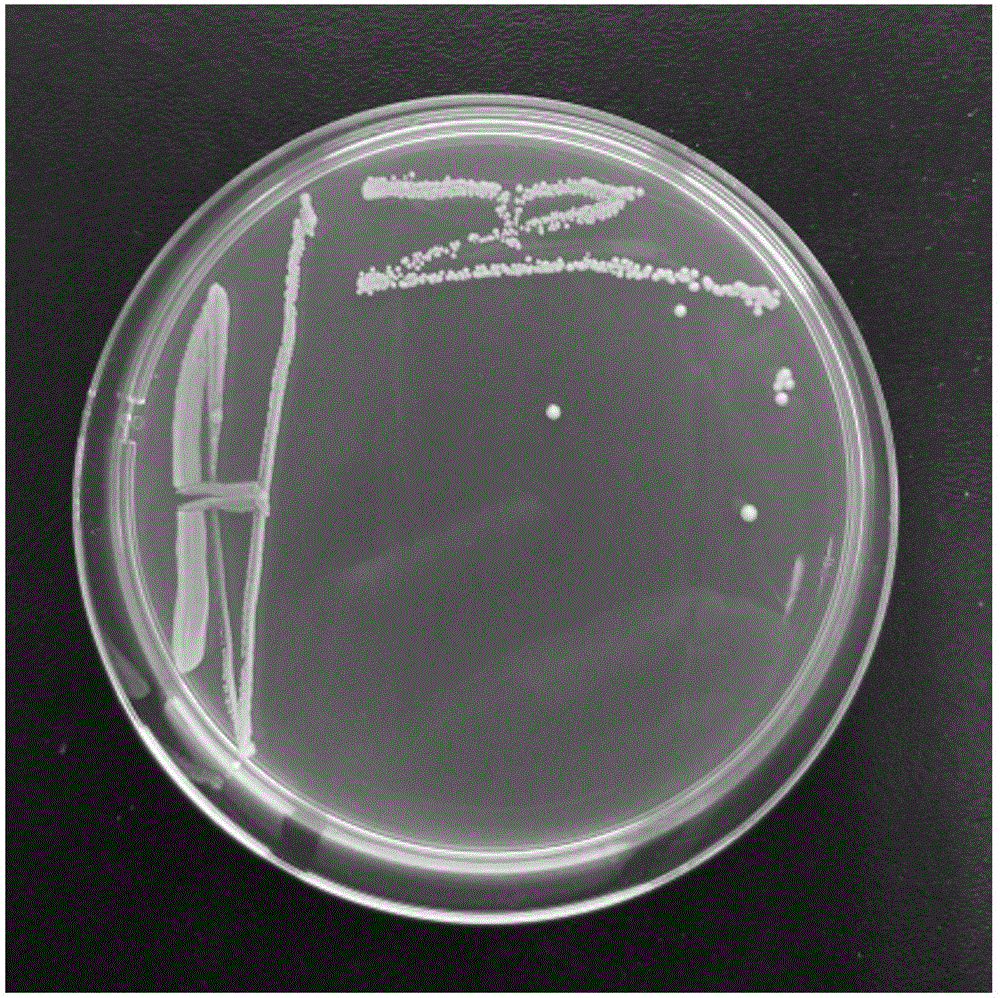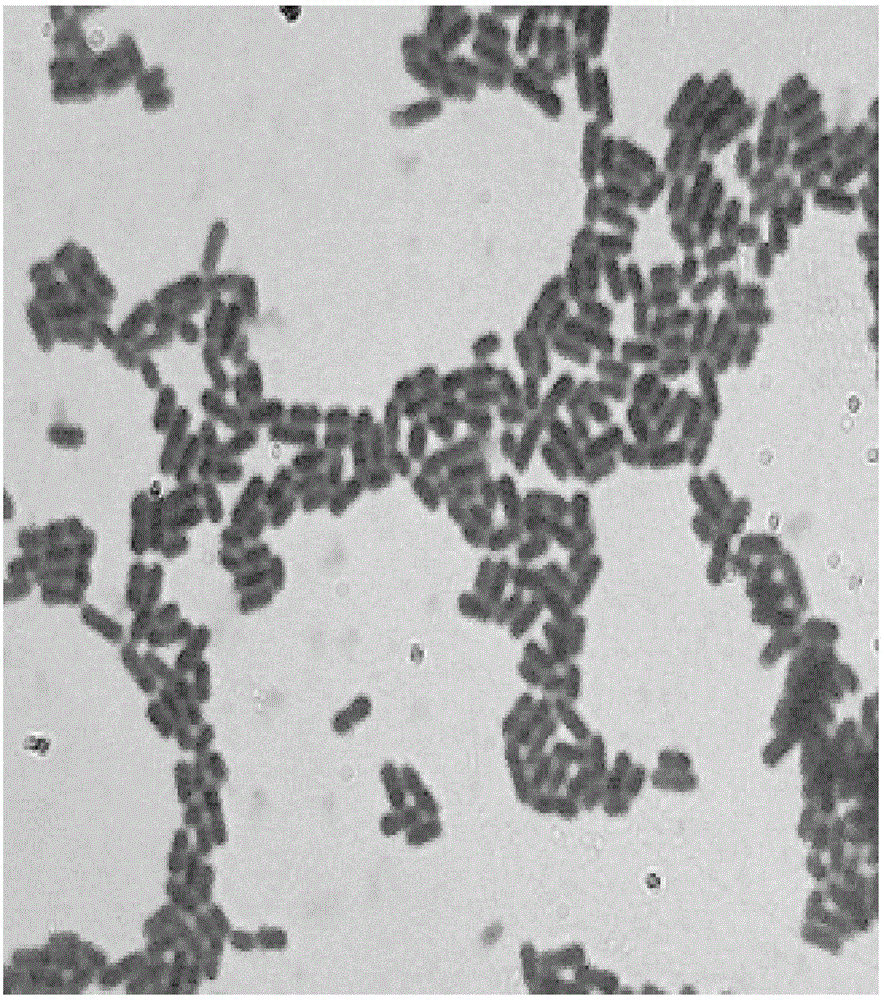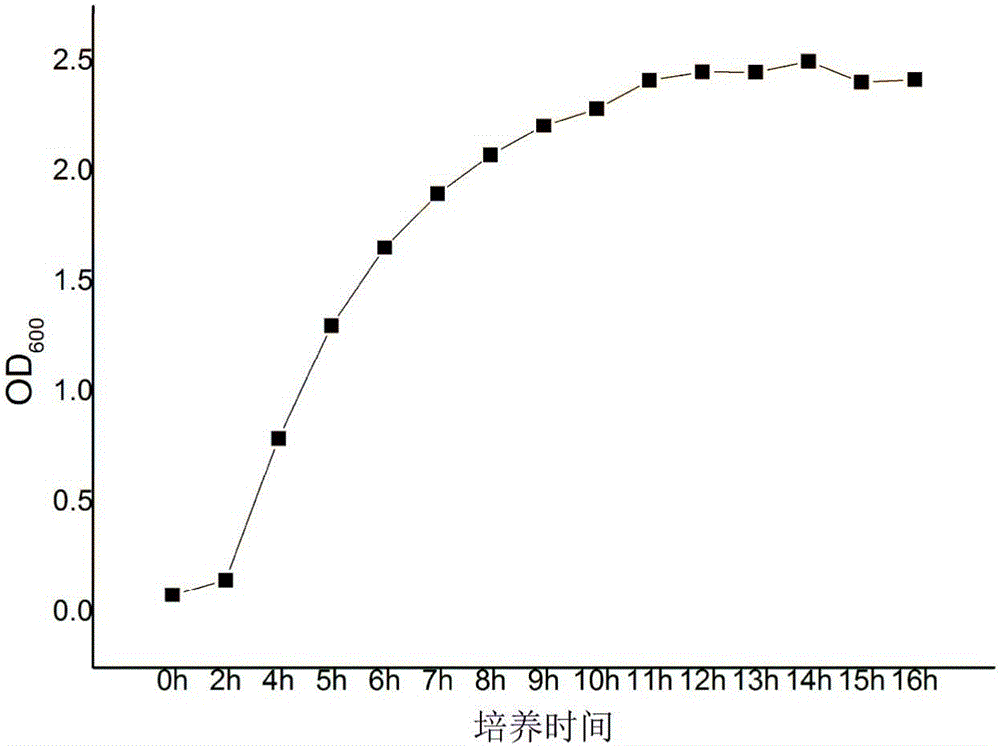High-diacetyl-yield Lactobacillus plantarum strain and application thereof
A technology of Lactobacillus plantarum and diacetyl, applied in the field of microbiology, can solve the problems of insufficient ability of lactic acid bacteria to produce diacetyl, and achieve remarkable technological progress, high yield and broad prospects
- Summary
- Abstract
- Description
- Claims
- Application Information
AI Technical Summary
Problems solved by technology
Method used
Image
Examples
Embodiment 1
[0041] The collection and separation of embodiment 1 Lactobacillus plantarum CCTCC M 2016513
[0042] (1), sample pretreatment
[0043] Take several portions of 3g of Tibetan Linggu mushroom, put them into 50ml Erlenmeyer flasks filled with 15ml of sterile water respectively, after shaking, let stand for 20min, and set aside.
[0044] (2) Isolation of lactic acid bacteria strains
[0045] Use sterile water to serially dilute the above samples according to 1:10 by volume, take 0.1mL diluted samples at each dilution, spread the MRS agar plate and M17 agar plate respectively, and incubate at a constant temperature under anaerobic conditions at 37°C 24-48h, use a sterile toothpick to pick out a single colony with different sizes, raised, slightly white, moist, with neat edges, and the back of the colony is yellow. Then streak on the corresponding agar plate to obtain a pure single colony, carry out Gram staining, and contact enzyme experiment. The purified strains were preserve...
Embodiment 2
[0060] Example 2 Identification of Lactobacillus plantarum CCTCC M 2016513
[0061] (1) Physiological and biochemical tests
[0062] Strain CCTCC M 2016513 is a Gram-positive, peroxidase-negative, non-motile bacillus capable of growth at 15°C and 45°C.
[0063] (2) 16s rDNA sequence analysis of strain CCTCC M 2016513
[0064] Genomic DNA extraction method of strain CCTCC M 2016513: pick and inoculate a single colony of purified CCTCC M 2016513 into 10 mL of MRS liquid medium, culture at 37°C for 8 hours, and centrifuge the liquid (5000 g, 10 min) to collect the bacteria. Genomic DNA extraction kit (Sangon Bioengineering (Shanghai) Co., Ltd.) was used for extraction. PCR amplification using two synthetic universal primers
[0065] 16s 27F:GAGAGTTTGATCCTGGCTCAG
[0066] 16s 1492R: CGGCTACCTTGTTACGACTT
[0067] The PCR products were recovered with a column-type PCR product purification kit (Sangon Bioengineering (Shanghai) Co., Ltd.), purified and sent to Sangon Bioengineeri...
Embodiment 3
[0070] Growth characteristics of embodiment 3CCTCC M 2016513 strain
[0071] (1) Drawing of growth curve of CCTCC M 2016513 strain
[0072] Insert the activated Lactobacillus plantarum CCTCC M 2016513 into the MRS liquid medium according to the inoculum amount of 5% (v / v), cultivate it at a constant temperature of 37°C for 16h, measure the OD value of the culture solution at 600nm every 1-2h, and use OD The growth curve of strain CCTCC M 2016513 in MRS was obtained by plotting the value against time, and the results ( image 3 ) showed that: Lactobacillus plantarum CCTCC M 2016513 grew rapidly in the MRS medium, entered the logarithmic phase at about 2h, and entered the stationary phase at about 11h.
[0073] (2) Determination of the optimal growth temperature of CCTCC M 2016513 strain
[0074] Inoculate the activated Lactobacillus plantarum CCTCC M 2016513 into 10mL MRS liquid medium at 5% (V / V) inoculum, and place them at 15°C, 25°C, 32°C, 37°C, 40°C and 45°C Cultivate at...
PUM
 Login to View More
Login to View More Abstract
Description
Claims
Application Information
 Login to View More
Login to View More - R&D
- Intellectual Property
- Life Sciences
- Materials
- Tech Scout
- Unparalleled Data Quality
- Higher Quality Content
- 60% Fewer Hallucinations
Browse by: Latest US Patents, China's latest patents, Technical Efficacy Thesaurus, Application Domain, Technology Topic, Popular Technical Reports.
© 2025 PatSnap. All rights reserved.Legal|Privacy policy|Modern Slavery Act Transparency Statement|Sitemap|About US| Contact US: help@patsnap.com



